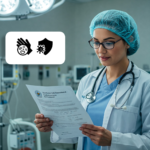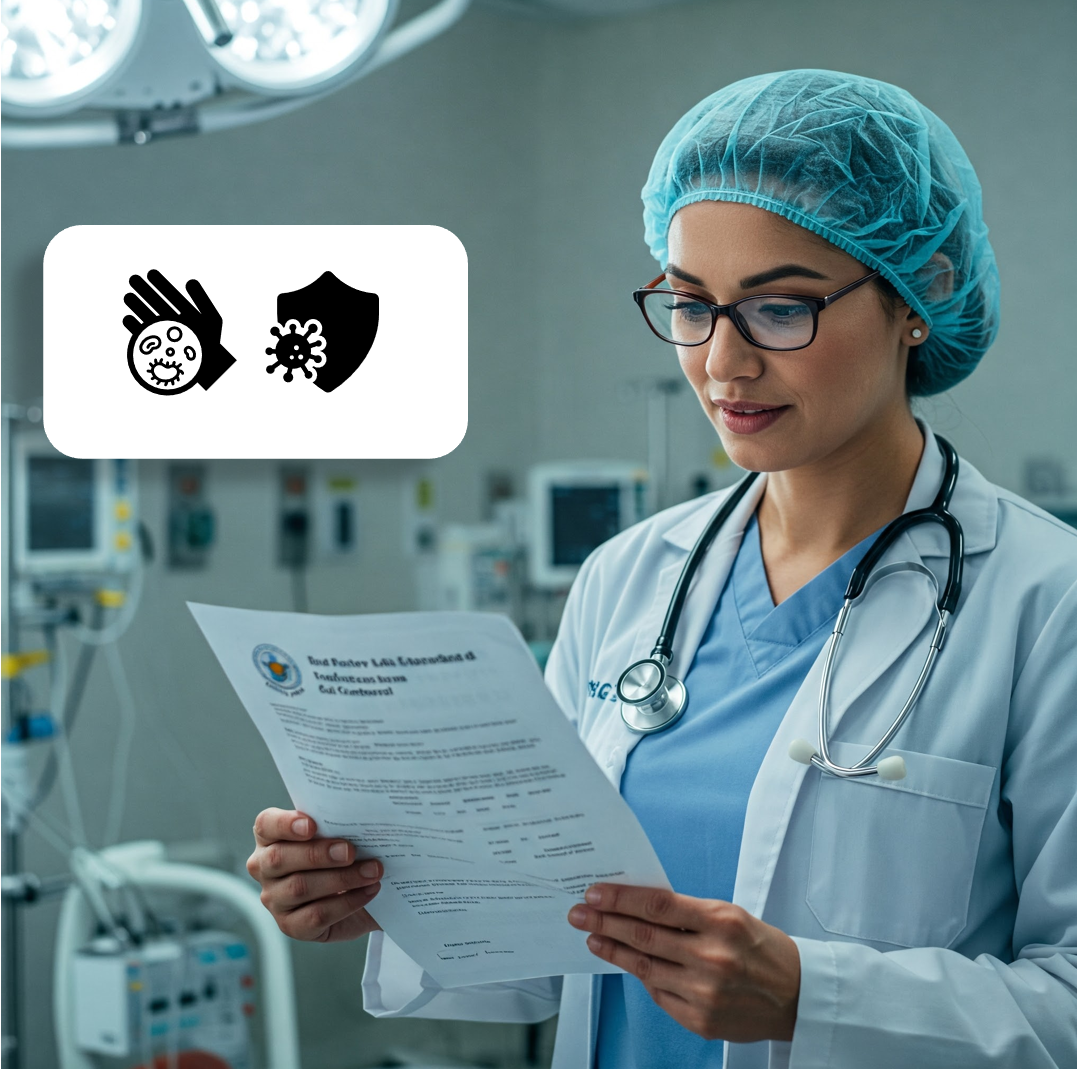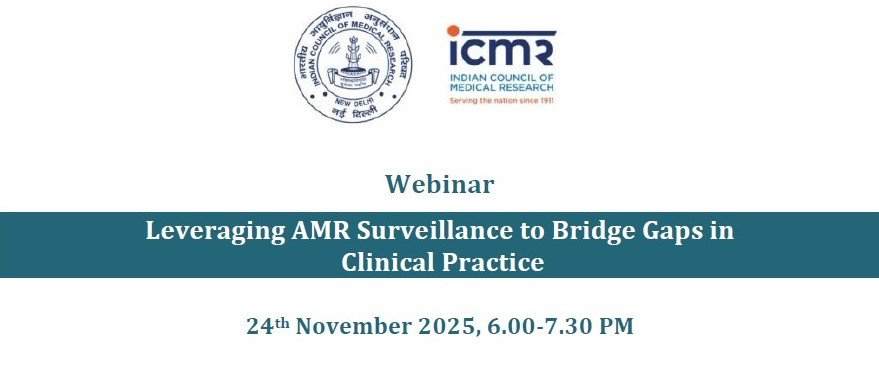Disclaimer: This post is for academic purposes only. Please read the original document if you intend to use them for clinical purposes.
This document reviews the September 2024 update of the 2007 CDC Guideline for Isolation Precautions: Preventing Transmission of Infectious Agents in Healthcare Settings. It aims to improve the safety of the healthcare delivery system by reducing Healthcare-Associated Infections (HAIs). This guideline is intended for Infection Prevention & Control (IPC) staff, healthcare epidemiologists, administrators, nurses, other healthcare workers (HCWs), and anyone involved in developing, implementing, and evaluating IPC programs across the continuum of care.
Main points in this revision:
- The shift in healthcare delivery from acute care hospitals to diverse settings (e.g., home care, ambulatory care, long-term care), necessitating adaptable recommendations.
- The emergence of new pathogens (e.g., SARS-CoV, Avian influenza), renewed concern for evolving known pathogens (e.g., C. difficile, noroviruses, CA-MRSA), and the threat of bioterrorism.
- Reaffirmation of Standard Precautions as the foundation for preventing transmission, with new additions like respiratory hygiene/cough etiquette and safe injection practices.
- Accumulated evidence on environmental controls, leading to updates on the protective environment for immunocompromised patients.
- Growing evidence that organizational factors (e.g., nurse staffing, safety culture) influence healthcare personnel (HCP) adherence to infection control, emphasizing the need for administrative involvement.
- The increasing incidence of HAIs caused by Multidrug-Resistant Organisms (MDROs), requiring more specific surveillance and control recommendations.
Themes :
1. Scope:
The guideline builds upon a history of isolation and infection prevention documents, reaffirming existing principles and introducing new concepts:
- Expanded Scope: The guideline now covers all healthcare delivery systems, including hospitals, long-term care facilities, ambulatory care, home care and hospice.
- Terminology Shift: The term nosocomial infections is replaced by HAIs to reflect the broader range of settings where infections can be acquired.
- Reaffirmation of Core Principles:
- Standard Precautions: reaffirmed as the foundation for preventing transmission during patient care in all healthcare settings.
- Transmission-Based Precautions: emphasized for empirical use based on clinical presentation and likely pathogens until specific diagnoses are confirmed.
2. Rationale for Standard and Transmission-Based Precautions
Transmission of infectious agents in healthcare settings requires three elements: a source, a susceptible host, and a mode of transmission.
2.1. Modes of Transmission:
- Contact Transmission:
- Direct Contact: Microorganisms transferred directly from one infected person to another (e.g., blood/body fluid exposure, scabies mites, HSV).
- Indirect Contact: Transfer through a contaminated intermediate object or person (e.g., contaminated hands of healthcare personnel, patient-care devices, shared toys, inadequately cleaned instruments.
- Clothing, uniforms, laboratory coats, or isolation gowns used as personal protective equipment (PPE), may become contaminated with potential pathogens after care of a patient colonized or infected with an infectious agent, (e.g., MRSA, VRE, and C. difficile. Although contaminated clothing has not been implicated directly in transmission, the potential exists for soiled garments to transfer infectious agents to successive patients.
- Droplet Transmission: Respiratory droplets carrying infectious pathogens transmit infection when they travel directly from the respiratory tract of the infectious individual to susceptible mucosal surfaces of the recipient, generally over short distances, necessitating facial protection.
- Historically, the risk distance was ≤3 feet, but experimental studies with smallpox and investigations during the global SARS outbreaks of 2003 suggest that droplets from patients with these two infections could reach persons located 6 feet or more from their source. Thus, a distance of ≤3 feet is best viewed as an example of what is meant by a short distance from a patient and should not be used as the sole criterion for deciding when a mask should be donned to protect from droplet exposure. Examples: Bordetella pertussis, influenza virus, adenovirus, rhinovirus, Mycoplasma pneumoniae, SARS-CoV, group A streptococcus, Neisseria meningitidis.
- Airborne Transmission: Occurs by dissemination of either airborne droplet nuclei or small particles in the respirable size range containing infectious agents that remain infective over time and distance.
- Requires special air handling and ventilation systems {e.g., Airborne Infection Isolation Room (AIIR)} to contain and then safely remove the infectious agent. Examples: Mycobacterium tuberculosis, Rubeola virus (measles), Varicella-Zoster virus (chickenpox), and potentially Variola virus (smallpox).
- Emerging Issues: Discussion of obligate (e.g., TB), preferential (e.g., measles, varicella), and opportunistic (e.g., SARS, noroviruses under special circumstances) airborne transmission.
- Environmental Airborne Sources: Some agents like Aspergillus spp. (from construction dust) and anthrax spores are environmentally derived and typically not person-to-person.
2.2. Epidemiologically Important Organisms
Defined by: propensity for transmission in healthcare, antimicrobial resistance, association with serious disease/mortality, and being newly discovered or reemerging.
- Clostridium difficile (C. difficile): A major cause of healthcare-associated diarrhea. Important factors that contribute to healthcare-associated outbreaks include environmental contamination, persistence of spores for prolonged periods of time, resistance of spores to routinely used disinfectants and antiseptics, hand carriage by healthcare personnel to other patients, and exposure of patients to frequent courses of antimicrobial agents.
- Control focuses on syndromic application of Contact Precautions for patients with diarrhea, accurate identification of patients, environmental measures (e.g., rigorous cleaning of patient rooms) and consistent hand hygiene.
- Use of soap and water, rather than alcohol based handrubs, for mechanical removal of spores from hands, and a bleach-containing disinfectant (5000 ppm) for environmental disinfection, may be valuable when there is transmission in a healthcare facility.
- Multidrug-resistant organisms (MDROs): Bacteria resistant to one or more classes of antimicrobial agents (e.g., MRSA, VRE). Transmission is primarily patient-to-patient via HCW hands. Requires a comprehensive approach including administrative involvement, education, judicious antibiotic use, surveillance, infection control precautions, environmental measures, and decolonization.
2.3. Agents of Special Infection Control Interest
- Bioterrorism Agents (Category A): Anthrax, smallpox, plague, tularemia, viral hemorrhagic fevers, botulism. Require specific preparedness plans for identification, prevention of transmission, treatment, PPE, and environmental protection. Pre-event smallpox vaccination programs for HCP proved effective in preventing transmission when strict vaccination site care was followed.
- Prions (e.g., CJD, vCJD): Transmitted iatrogenically through contaminated medical instruments or tissue. Standard Precautions are generally used, but special precautions for tissue handling and instrument reprocessing are critical.
- Severe Acute Respiratory Syndrome (SARS): Primarily transmitted by contact and/or droplet routes, but opportunistic airborne transmission could not be excluded. Highlighted the importance of vigilance and prompt implementation of infection control measures at the first point of encounter.
- Noroviruses: Highly contagious, transmitted via contaminated food/water and person-to-person, facilitated by fomites and aerosolization from vomitus/fecal material. Requires Contact + Standard Precautions, rigorous environmental cleaning with hypochlorite solutions, and careful hand hygiene (soap and water preferred due to alcohol’s limited efficacy against spores).
- Hemorrhagic Fever Viruses (HFV): Person-to-person transmission primarily through direct blood and body fluid contact. Standard, Contact and Droplet Precautions with eye protection are effective. Airborne precautions are not routinely required, but AIIRs are prudent for aerosol-generating procedures.
2.4. Transmission Risks in Specific Healthcare Settings and Patient Populations
- Hospitals (ICUs, Burn Units, Pediatrics): High-risk areas due to patient susceptibility, invasive devices, frequent HCW contact, and specific pathogens.
- Non-Acute Healthcare Settings (Long-Term Care, Ambulatory, Home Care): Unique challenges in controlling transmission due to shared spaces, prolonged stays, quick room turnover, and less structured environments.
- Immunocompromised Patients: At increased risk for various infections, often requiring a Protective Environment for allogeneic HSCT patients to minimize exposure to environmental fungi.
- Cystic Fibrosis Patients: Require special consideration due to risk of person-to-person transmission of agents like Burkholderia cepacia complex and P. aeruginosa. Recommendations include patient segregation, environmental decontamination, and avoiding group chest physiotherapy.
3. Fundamental Elements to Prevent Transmission
3.1. Administrative Measures:
- Commitment to Safety: Healthcare organizations must integrate IPC into patient and occupational safety programs.
- Resource Allocation: Provision of fiscal and human resources for maintaining IPC and occupational health programs is crucial.
- Infection Control Professional (ICP) Staffing: The guideline suggests a ratio of 0.8 to 1.0 ICP per 100 occupied acute care beds as appropriate, noting that the 1970s recommendation of 1 ICP per 250 beds is no longer adequate due to increased scope of work.
- Bedside Nurse Staffing: Adequate nurse staffing influences the quality of patient care and is more likely that infection control practices will be given appropriate attention and applied correctly and consistently.
- Clinical Microbiology Laboratory Support: Essential for promptly detecting and reporting epidemiologically important organisms, identifying emerging patterns of antimicrobial resistance, and assisting in assessment of the effectiveness of recommended precautions.
3.2. Institutional Safety Culture and HCP Adherence:
- Safety Culture: A shared commitment to safety by management and workforce. It is created through management actions, worker participation, availability of protective equipment, group norms, and socialization processes.
- Adherence: Adherence to recommended infection control practices decreases transmission of infectious agents. Interventions require a multifaceted approach, with leadership making prevention an institutional priority.
3.3. Infection Control Practices:
- Hand Hygiene: The single most important practice to reduce the transmission of infectious agents. Alcohol-based hand rubs are preferred when hands are not visibly soiled.
- Personal Protective Equipment (PPE): Selection is based on the nature of patient interaction and likely transmission mode.
- Gloves: used to prevent contamination of HCP hands and protect patients from infectious material on hands. Discarded between patients; not washed for reuse.
- Isolation Gowns: protect HCP’s arms/body and clothing. Donned upon room entry for Contact Precautions. Removed before leaving the patient care area.
- Face Protection (masks, goggles, face shields): protect mucous membranes. Masks for source control (patient) and HCP protection from splashes/sprays.
- Respiratory Protection (N95 or higher respirators): required for preventing inhalation of airborne infectious particles (e.g., M. tuberculosis, SARS-CoV).
- Safe Work Practices: Prevention of needlesticks/sharps injuries and mucous membrane contact (e.g., during aerosol-generating procedures).
- Patient Placement: Single-patient rooms are preferred, especially for Airborne Precautions or Protective Environments. Cohorting (grouping patients with same infection) is an option during outbreaks.
- Environmental Measures: Routine cleaning and disinfection of non-critical surfaces, especially frequently touched surfaces near the patient. Specific disinfectants (e.g., bleach for C. difficile) may be needed for certain pathogens.
- Patient Care Equipment: Cleaned and maintained per manufacturer instructions; disposable or patient-dedicated equipment preferred.
- Textiles and Laundry: Handled to prevent aerosolization or contact contamination.
- Dishware/Eating Utensils: Standard cleaning is sufficient. Do not share utensils in communal settings.
3.4. Adjunctive Measures
- Chemoprophylaxis: Use of antimicrobials or topical antiseptics (e.g., Mupirocin for MRSA decolonization).
- Immunoprophylaxis: Vaccination of HCP (e.g., Hepatitis B, Influenza, Measles, Pertussis, Varicella) and patients helps prevent introduction and spread of vaccine-preventable diseases.
- Management of Visitors: Visitors can be sources of infection. Screening is important, especially during community outbreaks or for high-risk patient units. Symptomatic visitors should wear masks and limit exposure.
4. Categories of Precautions
4.1. Standard Precautions
- Intended to be applied to the care of all patients in all healthcare settings, regardless of the suspected or confirmed presence of an infectious agent.
- New Elements:
- Respiratory Hygiene/Cough Etiquette: Targeted at patients and accompanying family members and friends with undiagnosed transmissible respiratory infections at the point of initial encounter. Includes education, signs, tissues/receptacles, hand hygiene, and spatial separation.
- Safe Injection Practices: Reinforces basic principles of aseptic technique for the preparation and administration of parenteral medications, including single-use needles/syringes and preference for single-dose vials.
- Mask for Lumbar Puncture Procedures: Clinicians should wear a surgical mask during spinal canal or subdural space procedures to prevent droplet transmission of oropharyngeal flora.
4.2. Transmission-Based Precautions
Used in addition to Standard Precautions when transmission is not fully interrupted by Standard Precautions alone. Applied empirically based on clinical syndrome.
- Contact Precautions: Prevents transmission via direct/indirect contact. Requires gown and gloves for all interactions that may involve contact with the patient or potentially contaminated areas in the patient’s environment. Donning PPE upon room entry and discarding before exiting the patient room is done to contain pathogens.
- Droplet Precautions: Prevents transmission via respiratory droplets over short distances. Requires HCP to wear a surgical mask (a N-95 mask/respirator is not necessary) for close contact with infectious patient; the mask is generally donned upon room entry. Special air handling is not required.
- Airborne Precautions: Prevents transmission of agents remaining infectious over long distances in the air. Requires an AIIR with negative pressure and specific air changes per hour. HCP wear a mask or respirator, depending on the disease-specific recommendations that is donned prior to room entry.
4.3. Protective Environment (PE)
- Designed for allogeneic Hematopoietic Stem Cell Transplantation (HSCT) patients to minimize fungal spore counts in the air and reduce the risk of invasive environmental fungal infections.
- Includes HEPA filtration, directed airflow, positive pressure room, well-sealed rooms, high air changes per hour, strategies to minimize dust, and prohibiting dried/fresh flowers and potted plants.
Important Updates (as of September 2024)
- Viral Hemorrhagic Fevers
- Andes virus
- Nipah virus
Summary:
The recommendations are categorized by strength of evidence (categories IA, IB, IC, II, Unresolved Issue):
- Administrative Responsibilities (IB/IC): incorporate IPC into safety programs, prioritize it, provide resources (fiscal, human for ICPs), ensure adequate nurse staffing, involve ICPs in facility design/equipment selection, provide microbiology lab support, ensure occupational health services, and provide necessary PPE.
- Education and Training (IB/II): provide job- or task-specific training during orientation/induction and ongoing education for all HCP, including vaccine use. Provide instructional materials for patients and visitors.
- Surveillance (IA/IB/II): monitor incidence of epidemiologically-important organisms and HAIs, apply epidemiologic principles (standard definitions, data analysis, feedback). Develop strategies to reduce risks and evaluate effectiveness. Review community trends.
- Standard Precautions (IA/IB/IC/II):
- Hand Hygiene: critical; wash hands with soap/water if visibly soiled or contact with spores; otherwise, alcohol-based hand-rub (ABHR). Perform before/after patient contact, after body fluid exposure, after touching patient’s skin/environment, and after glove removal. Do not wear artificial fingernails when in contact with high-risk patients.
- PPE Use: wear (donning) PPE when contact with blood/body fluids is anticipated. Remove (doffing) PPE before leaving the room. Don gloves for contact with infectious materials/patients; Doff after patient contact. Wear gowns to protect clothing. Use face protection for splashes/sprays.
- Respiratory Hygiene/Cough Etiquette: educate staff/patients/visitors, post signs, provide tissues, provide hand hygiene resources, offer masks to coughing individuals and encourage spatial separation.
- Patient Placement: prioritize single-patient rooms for transmission risk.
- Equipment/Environment/Laundry: handle to prevent transmission; clean/disinfect frequently touched surfaces and shared equipment; avoid agitation of soiled laundry.
- Safe Injection Practices: use aseptic technique, single-use needles/syringes, and prefer single-dose vials. Do not administer medications from a syringe to multiple patients.
- Special Lumbar Puncture Procedures: wear a surgical mask when performing procedures in the spinal canal/subdural space.
- Worker Safety: adhere to government requirements for bloodborne pathogen protection.
- Transmission-Based Precautions (IA/IB/IC/II): use for suspected/confirmed highly transmissible pathogens in addition to Standard Precautions. Prolong duration for immunosuppressed patients with viral infections.
- Protective Environment (IB/II/Unresolved Issue): for allogeneic HSCT patients to minimize fungal spore counts. Includes HEPA filtration, positive air pressure, and specific environmental controls. Patients wear respiratory protection when leaving PE during construction.
Conclusion:
This comprehensive guideline underscores the multifaceted nature of IPC, highlighting the critical roles of administrative support, trained personnel, adherence to evidence-based practices, and adaptation to evolving infectious disease threats and healthcare delivery models.
Citation: Siegel JD, Rhinehart E, Jackson M, Chiarello L, and the Healthcare Infection Control Practices Advisory Committee, 2007 Guideline for Isolation Precautions: Preventing Transmission of Infectious Agents in Healthcare Settings https://www.cdc.gov/infection-control/hcp/isolation/isolation-precautions/index.html









